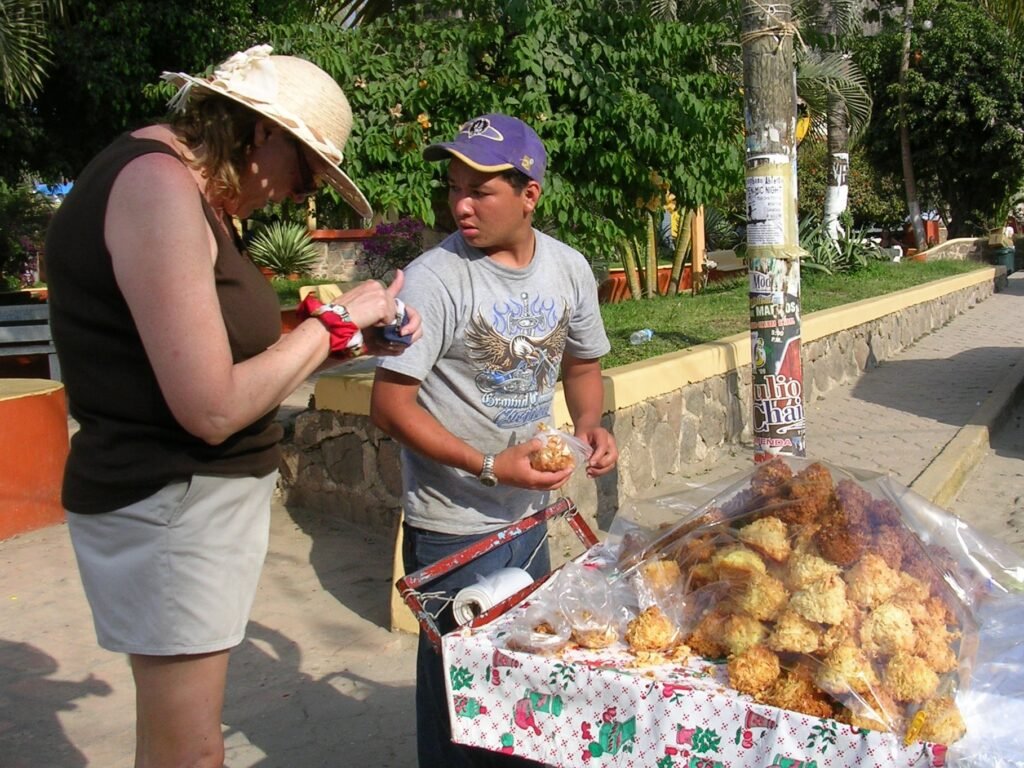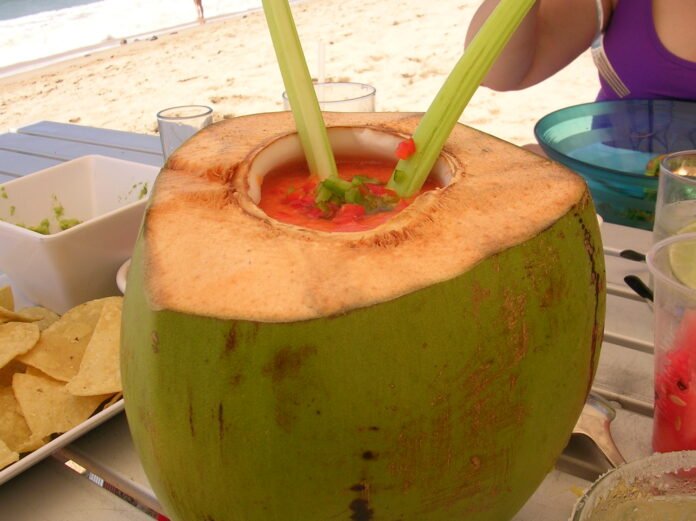Who hasn’t had coconut in some form or another? Here in Mexico, it is part of the regular diet.
During the 16th century, Pacific coconuts were introduced to Mexico from the Spanish East Indies via ships from the Philippines. Sometimes, the coconuts could be found lying on the beach, having endured the long ocean journey floating the waves from a distant island. If left alone, they will sprout again, eventually becoming a full-grown tree.
Cold coconuts can be found on many local street corners and beaches, especially on hot days. These vendors wield a machete the likes of which I have never seen before. Off comes the outer husk to reveal a small green or brown globe with three eyes that remind me of a monkey face or ghost.
The myth of the coco, or Cucuy, originated in Portugal and is a mythical ghost monster, equivalent to the bogeyman. The word coco is used in colloquial speech to refer to the human head or skull.
Next, the top of the globe is cut off, and a straw is inserted to sip the cool, clear liquid as you hold the coco in your hands. When done, ask for the carne or coconut meat to be scooped out and handed to you in a bag for snacking. The older coconut meat is dry and crunchy. Meat from the younger green coconuts is slimy and not much to my liking. You can ask for a young or old coco when buying yours.
Many locals drink coconut water regularly to ward off parasites. The nutritious value and health benefits of the water and the milk which is pressed from the meat are well known, as is coconut oil, which has
fast become a staple in the cosmetic industry.
So, how do these coconuts make it to the local vendors? The coconut palm grows almost everywhere in this tropical climate. They produce 30-70 fruits (nuts) per year for up to 70 years.

The harvesting is done by agile young men who climb up these 90-foot trees, often barefoot, using simple ropes to hoist themselves up. They carry a machete, which they use to cut down the nut clusters. Beware falling nuts. They have been known to kill people!
Candy stores or dulcerias around town offer many products made of coconut. Coco con leche is popular…shredded coconut, milk, and some sugar rolled into various sizes.
You can also find these with fruit flavors such as strawberry, mango, and tamarind or with alcohol such as tequila, rum, and whiskey. Coconut cones or cocadas are made of toasted shredded coconut and honey. Some have pineapple juice added. You will find these cocadas in dulcerias and from street vendors wheeling their carts along the Malecón or in
neighboring plazas.
Other parts of the coconut palm are also used. Some artists have taken the spathe which holds the coconut flowers and made them into lovely painted art pieces.
The dried stems of the nut groups make attractive floral decorations. The fronds can be used for palapa thatch and weaving various items such as hats and bags.
The fibrous husk around the nut is known as coir. This fiber is durable, non-toxic, harmless, and a natural green product suitable as raw material for mattresses and cushions. It is also an appropriate medium for egg laying, incubation, and odor control. It can be safely composted in your garden or mixed in with soil for potted plants and terrariums, as it helps maintain proper humidity.
Artisans create jewelry and other artistic forms from the hard coconut shells, including those famous bikini top souvenirs! The roots contain medicinal properties believed to help treat kidney problems, heartburn, and eczema.




